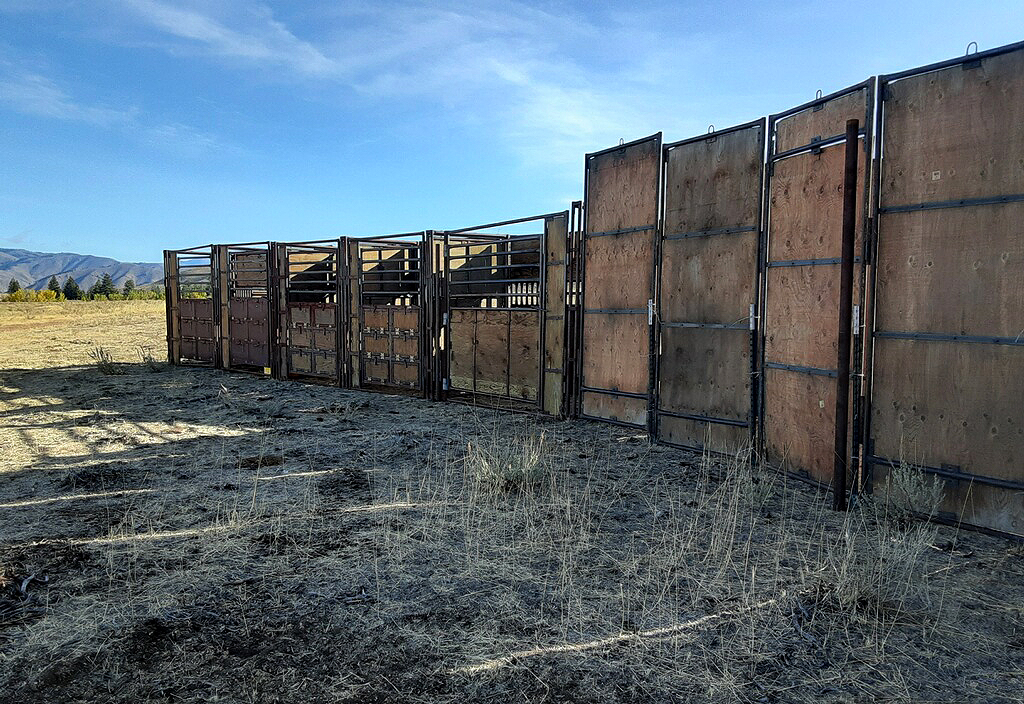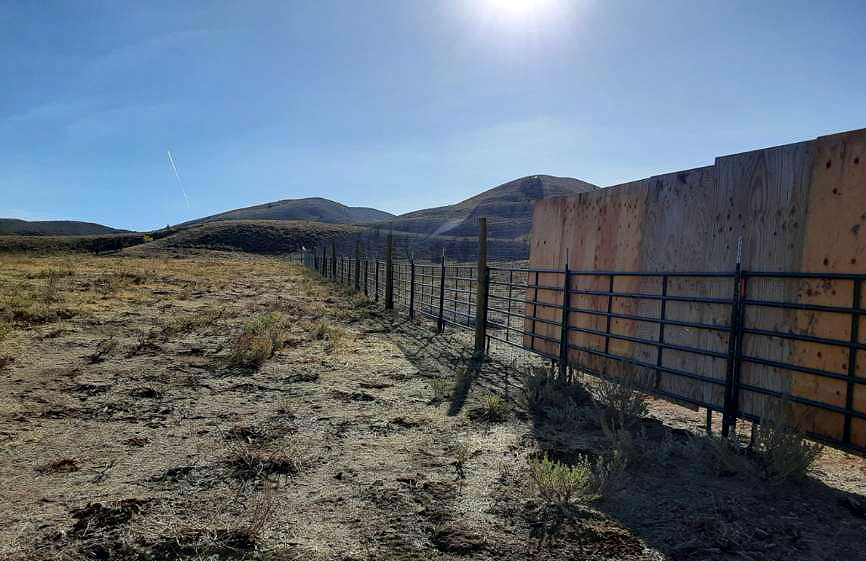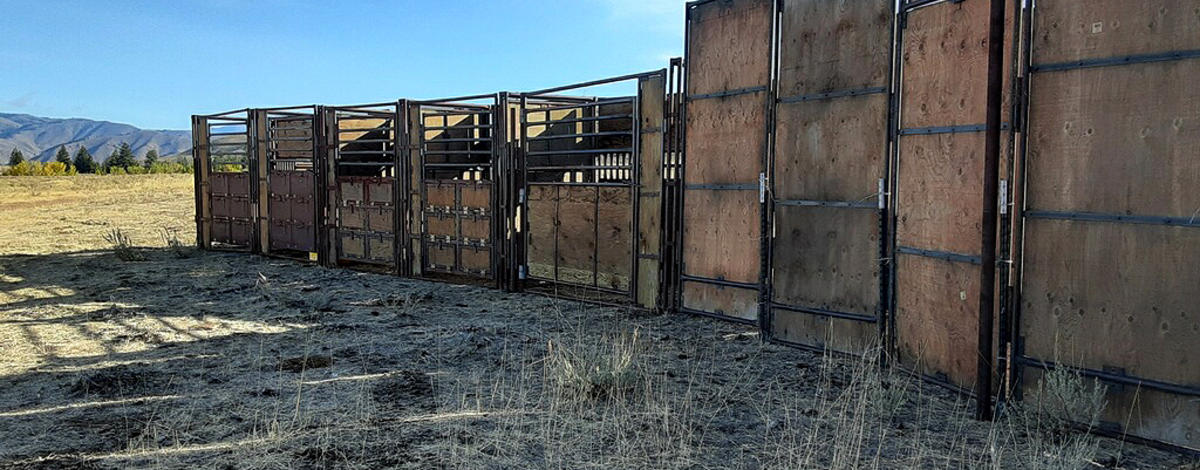In mid-October, Fish and Game will conduct a trapping and translocation project on private property to remove elk responsible for ongoing depredation issues in the Little Camas region of southern Idaho. Elk in this area have a long history of expensive damage to crops on private property at night, and then retreating to adjoining private property during the day. Because all activity will be on private ground, there will not be any disruption to ongoing hunting seasons.

Corral used to hold elk during the trapping and translocation operation.
Up to 70 cows and calves will be trapped and transported to central Idaho. Any bulls captured in the trapping effort will be anesthetized, ear-tagged and released on-site.
Elk populations in southern Idaho are high
Crop damage caused by elk across southern Idaho has increased over the past several years. A contributing factor are the abundant and healthy elk populations in several elk management zones. Elk numbers in the Smoky-Bennett Zone, which includes the area around Little Camas Reservoir are above the population management objective as outlined in the statewide elk management plan.
In 2019, the Idaho Fish and Game Commission increased the number of antlerless elk tags in the Smoky-Bennett Zone in an attempt to slow the growth of the herds within the zone. Over the last several years, Fish and Game has instituted a more aggressive approach to depredation issues by using a variety of management tools to change elk behavior and keep them from damaging crops. Those management tools include increasing hunting opportunity during the regular season, depredation hunts, hazing, issuing kill permits to landowners and the use of Department sharp shooters on private property.
Safety is a priority concern when trapping
Trapping and translocation of any wild animal is both dangerous and stressful to the animal as well as Fish and Game employees who are responsible for the trapping process. To keep employees and elk safe, extensive planning has occurred to address a wide range of possible scenarios that might happen during the trapping and transporting of elk.

Half-mile long wings will funnel elk into a holding corral prior to translocation into central Idaho.
Every effort will be made to ensure stress and injury to elk is minimized, but it is possible that a small number of elk may die as a result of the effort. Any elk that die due to the trapping effort will be promptly field-dressed, refrigerated, and then professionally processed before being donated to Idaho Hunters Feeding the Hungry for distribution to area food pantries.
Translocation of trapped elk
The purpose of translocating these elk is to remove them from an area where costly and repeated depredation has been occurring. These same elk reside almost exclusively on private property offering very little access to hunters to harvest these particular elk during the hunting season. The elk trapped near Little Camas Reservoir will be translocated deep into central Idaho. Up to 22 adult cow elk will be fitted with radio collars. The collars will allow Department biologists to track the elk in their new location and assist in monitoring survival.
For more information about elk management and big game depredation contact the Magic Valley Regional Office at (208) 324-4359.

